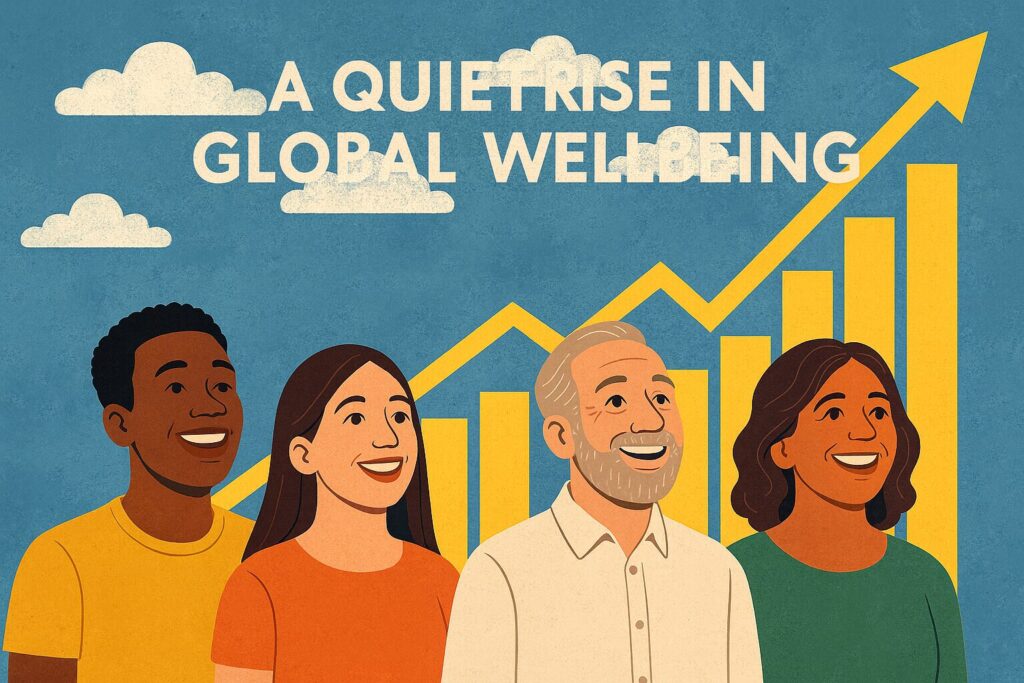In recent years, something unexpected has been happening around the world: more people are saying their lives are going well. Not just tolerable, not just “fine”, but genuinely better. Across continents and cultures, a growing share of humanity describes itself as thriving, even amid economic turbulence, political conflicts, and the looming pressure of climate change.
A New Lens on Progress
Traditionally, national success has been measured in numbers: GDP growth, trade balances, stock market swings. Yet those statistics often miss the personal story. Increasingly, the more telling measure is how people rate their own lives. When asked to place themselves on a ladder from zero to ten, with the top rungs symbolizing the best possible life, more people now climb higher than in years past.
Current life ratings hover close to six out of ten worldwide, but it is the view of the future that is especially striking. Many place themselves at seven or higher five years down the line, a sign that optimism is not merely surviving but spreading.
Uneven Patterns of Hope
This global picture, however, is far from uniform. In regions often assumed to be the most comfortable – North America, Western Europe, and Australia – self-reported wellbeing has slipped, especially among younger generations. The sense of thriving there has dropped below half the population.
Elsewhere, the trend reverses. Large parts of Latin America, Eastern and Southern Europe, and Asia report steady gains. Even in sub-Saharan Africa and the Middle East, where life satisfaction has historically been lower, modest improvements are beginning to show. In some countries, the rise has been dramatic: a jump of 20 points or more over the past decade.
Why the Upturn?
Part of the story runs parallel to material improvements. More children are surviving into adulthood, more people have access to education, and living standards continue to climb. But subjective wellbeing often moves on a different axis than raw development data.
What seems to matter just as much are the intangibles: freedom to make personal choices, confidence in children’s futures, and a sense that tomorrow can be brighter than today. Around four in five people worldwide now say they are satisfied with their personal freedoms. Three in four believe their country is a good place for children to grow and learn. Nearly half expect their living standards to improve.
These are not small sentiments; they shape the way individuals chart their own course through uncertainty. Optimism about one’s community and family often feeds into optimism about life as a whole.
A Fragile but Remarkable Trend
None of this erases the immense challenges the world faces. Conflict, climate disruption, and widening inequalities remain sharp threats. Nor does it mean that the majority of people have reached a level of flourishing; most still fall short of what could be called thriving.
Yet the long arc bends toward improvement. The share of those suffering, rating both their present and future lives at the bottom of the scale, has fallen to historic lows. More people are finding themselves not just enduring life, but anticipating better days ahead.
Against a backdrop of turmoil, that rise in hope is quietly remarkable. It suggests that even when the world feels unstable, the human instinct to believe in progress remains alive, and, for many, stronger than ever.






